DIAGNOSIS
Find the right products for your skin!
Want to know how to take care of your skin daily without consulting a specialist? Would you like to know which products suit your skin type? Then good news, Eau Thermale Avène teams have been working hard to provide you with an online skin diagnosis to determine your skin type. It takes just a few minutes to do. While we’re waiting for it to go live, we won’t let you down – we are here to explain how to complete it.
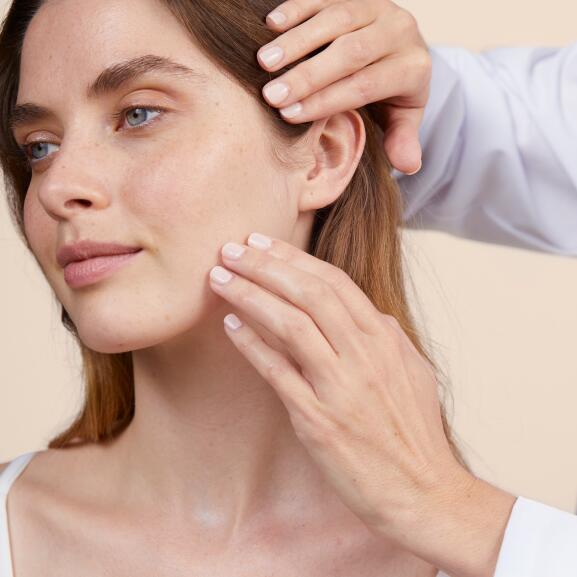
Your skin diagnosis for a tailor-made routine
You may sometimes find yourself standing clueless in front of the pharmacy shelves and their thousand and one products... It’s hard to choose one... Sensitive, hypersensitive, dry to very dry, dehydrated, oily or acne-prone... Every skin type has its own unique characteristics, traits and needs. Your skin needs its OWN product, and a suitable skincare routine. Don’t panic, we’re right here to advise you.
The key steps in a skincare routine
To take care of your skin daily, it is important to put in place a skincare routine tailored to your skin type, based on steps and products that can be repeated day after day. Whatever your skin type, these routines have three key steps: cleansing, moisturizing and protection.
Step 1
I cleanse my skin
Whatever your skin type, we never overlook facial cleansing: it’s E.S.S.E.N.T.I.A.L. In fact, removing impurities to oxygenate the skin is the first step in taking care of it, especially when you live in the city and the skin is exposed to pollution every day.
Step 2
I moisturise my face
Once your skin has been freed from the impurities that have remained on the surface, moisture allows it to regenerate – water and oil are key. Moisturizing daily provides these two essential resources. Depending on your skin type, choose a texture that is more or less oily to restore comfort and restore its original freshness.
Step 3
I protect my skin from UV rays all year round
Throughout the year, your skin is exposed to the sun’s UV rays and their harmful effects... So you should adopt a good habit and protect your skin daily by using a face care product with at least a low SPF. However, if you decide to expose yourself to the sun in an intense way, consider putting on SPF 50+ sun protection to avoid any nasty surprises!
Step 4
I nourish my body deeply
Often the skin on your body is forgotten in your daily skincare routine, especially in the wintertime. However, moisturizing it is just as important. We recommend moisturizing after showering, when skin is supple, clean and dry. Choose a texture that is more or less oily depending on your skin type and the season.
What is the best skincare routine for each skin type?
My step-by-step routine
Understanding your sensitive skin better
Your characteristics: Often feel tingling, tight and uncomfortable? Do you have thin, most often fair, fragile skin that tends to redden easily?
Then you have sensitive skin. In other words, your skin tends to react very easily to external factors linked to weather, lifestyle and inappropriate cosmetics.
Your needs: Deep hydration with high-tolerance products suited to sensitive skin.
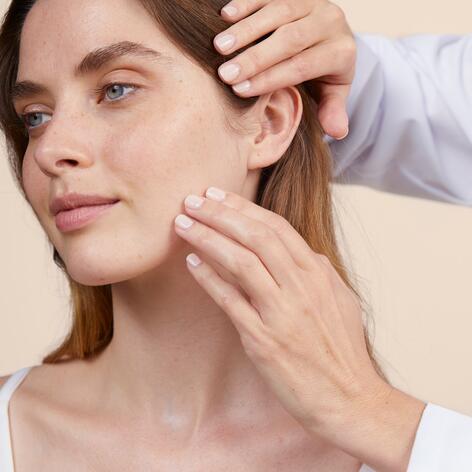
Skincare routine
Taking care of my sensitive skin
- Avène Thermal Spring Water SprayBest Seller
Thermal Spring Water
Avène Thermal Spring Water SpraySoothes - Restores the skin barrier - Calms
Understanding your hypersensitive skin better
Your characteristics: Does your skin react excessively to a substance or situation that causes redness and sometimes peeling? What’s more, do you discomfort such as tingling, tightness or hot flushes?
Then you have hypersensitive or intolerant skin that reacts strongly to daily aggressors such as the weather, chemicals, stress or unsuitable cosmetics.
Your needs: Using high-tolerance products, preferably without perfume or preservatives, to calm discomfort and restore the skin barrier.
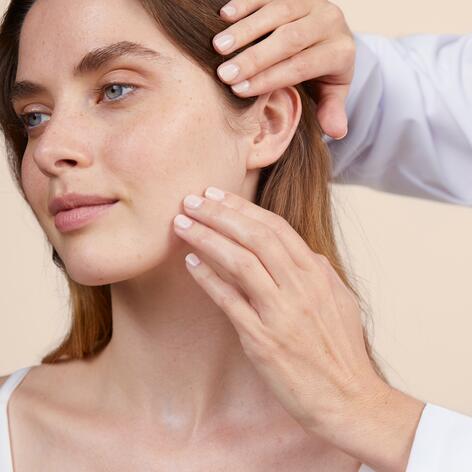
Skincare routine
Taking care of my hypersensitive skin
- Avène Thermal Spring Water SprayBest Seller
Thermal Spring Water
Avène Thermal Spring Water SpraySoothes - Restores the skin barrier - Calms - Tolérance Control Soothing skin recovery creamNouveau
Tolerance
Tolérance Control Soothing skin recovery creamHydrates - Calms - Strengthens the skin barrier
Understanding your oily skin better
Your characteristics: Does your skin look shiny? Is your skin texture uneven, with large pores? Do you find that makeup doesn’t last?
Then you have oily skin. This is because your skin produces excess sebum due to hypersecretion of the sebaceous glands. In addition to certain conditions such as acne, oily skin can be caused by hormonal imbalances, unsuitable cosmetics, stress or dietary imbalances.
Your needs: Removing impurities and regulating sebum production by regularly cleansing skin with gentle cleansers and using a mattifying moisturiser with a light texture.
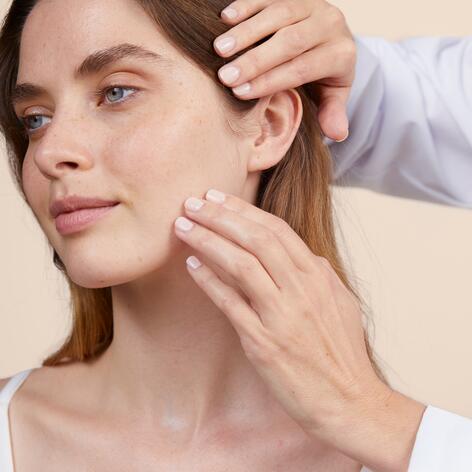
Skincare routine
Taking care of my oily skin
- Cleanance Micellar waterBest Seller
Cleanance
Cleanance Micellar waterRemoves make-up - Mattifies - Cleanses - Avène Thermal Spring Water SprayBest Seller
Thermal Spring Water
Avène Thermal Spring Water SpraySoothes - Restores the skin barrier - Calms
Understanding your acne-prone skin better
Your characteristics: Does your skin secrete excess sebum? Does it have spots, comedones or blackheads? Are those imperfections inflamed or painful?
Then you suffer from acne-prone skin. The sebaceous glands produce excess sebum, become blocked and develop cysts and comedones. It mainly occurs during adolescence but can also affect adults at other times in their life, especially due to hormonal imbalances.
Your needs: Regular skin cleansing (morning and evening) with gentle cleansers so as not to “ strip ” the skin and the use of non-comedogenic products that are specifically designed for your skin. However, if you notice that your acne is more severe, we recommend consulting a dermatologist.
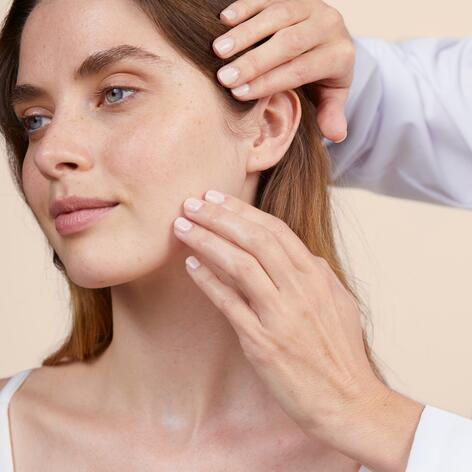
Skincare routine
Taking care of my acne-prone skin
- Cleanance Micellar waterBest Seller
Cleanance
Cleanance Micellar waterRemoves make-up - Mattifies - Cleanses - Avène Thermal Spring Water SprayBest Seller
Thermal Spring Water
Avène Thermal Spring Water SpraySoothes - Restores the skin barrier - Calms
Understanding your dry skin better
Your characteristics: Does your skin feel tight after showering and does your face feel rough, tight and tingles all over?
Then you have dry skin. It is a sign that it lacks lipids (fats) and that the cutaneous barrier, now impaired, no longer carries out its barrier function properly, protecting against daily aggressors (friction, cold, pollution, etc.).
This is characterised in particular by a loss of softness, slightly flaky skin, tight skin texture, premature fine lines.
Your needs: Applying a nourishing cream to restore the skin’s lipid barrier and restore comfort and suppleness.
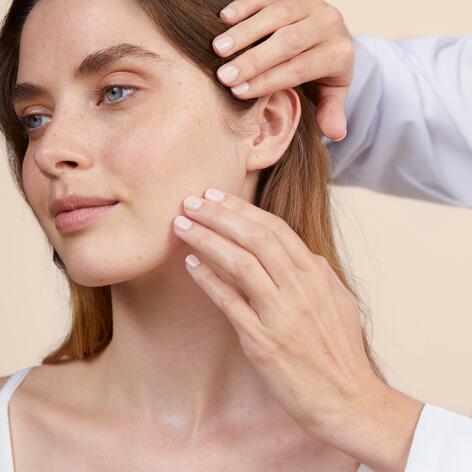
Skincare routine
Taking care of my dry skin
- Avène Thermal Spring Water SprayBest Seller
Thermal Spring Water
Avène Thermal Spring Water SpraySoothes - Restores the skin barrier - Calms - Revitalizing nourishing cream
Les Essentiels
Revitalizing nourishing creamNourishes - Soothes - Protects
Understanding your very dry skin better
Your characteristics: Does your skin become scaly and sometimes flaky? Not to mention, do you feel discomfort and tingling, which can be embarrassing or painful? Does skin peel in specific areas of your face such as the cheeks, sides of the nose, eyelids or forehead?
Then you have very dry skin. The skin barrier is actually damaged. You need to quickly soothe and restore the skin with a product with a rich texture, especially in winter, as cold weather can cause really uncomfortable cracked skin.
Your needs: Applying a product with a rich texture such as a balm to restore the lipid barrier.
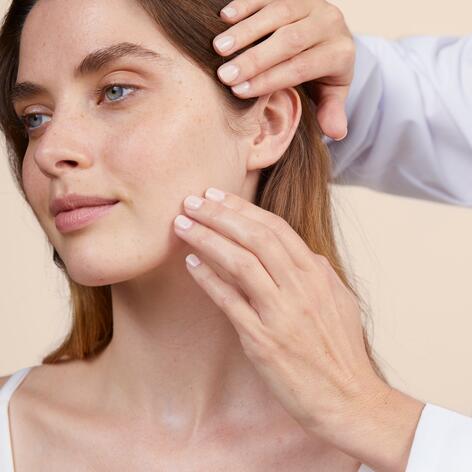
Skincare routine
Taking care of my very dry skin
- Revitalizing nourishing cream
Les Essentiels
Revitalizing nourishing creamNourishes - Soothes - Protects
Understanding your combination skin better
Your characteristics: Does your skin tend to be oily on the T-zone (forehead, nose, chin)? How about your cheekbones and jawbones, do they seem dry or normal? Do you have the impression that you are not in control of your skin and finding THE perfect treatment is a bit of a losing game? Then you have combination skin.
Your needs: Using products specifically formulated for combination skin to:
- treat the T-zone, just as you would for oily skin, to reduce shine and oiliness and provide a mattifying effect.
- provide moisture and comfort to areas that feel tight.
- avoid using overly harsh “stripping” treatments that are too aggressive for the dry parts of the face and stimulate the production of sebum on the oily parts.
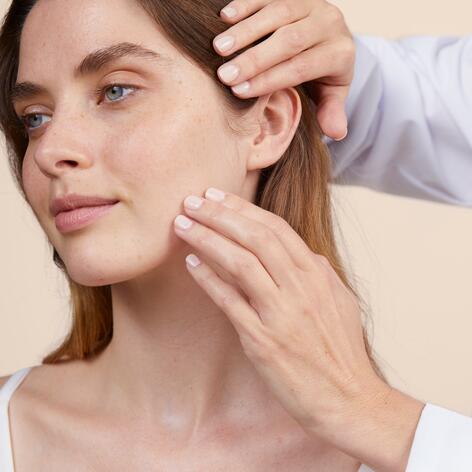
Skincare routine
Taking care of my combination skin
- Cleanance Micellar waterBest Seller
Cleanance
Cleanance Micellar waterRemoves make-up - Mattifies - Cleanses - Avène Thermal Spring Water SprayBest Seller
Thermal Spring Water
Avène Thermal Spring Water SpraySoothes - Restores the skin barrier - Calms
Which skin care routine should you adopt?
Identify what it really needs with the help of our experts and discover the most suitable skin care routine for you.














